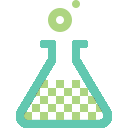In this frame we can distinguish between
a) Medicines sector where the activity of national bodies is co-ordinated at the European level by EMEA (European Medicines Agency).
b) Medical devices sector, where 2 different documents have been published:
– Directive 93/42/EC (with 2007/47/EC updates) Medical Devices
– Directive 98/79/EC In-vitro diagnostics
addressed in this web page.
 These Directives identify conditions to place on the market a large and articulated range of medical devices, using the same approach developed for market harmonization in EU.
These Directives identify conditions to place on the market a large and articulated range of medical devices, using the same approach developed for market harmonization in EU.
Wherever possible, also for medical devices EU delegates large responsibilities to the companies, however:
– The broad range of possible applications underlines the importance of product classification
– Application can often be critical, so it is more frequent the need to ask for Notified Body intervention
– Evaluating its specific situation, the company can choose different approaches (the so called modules) to show conformity to essential requirements.
Also in this case the company must prepare a Technical File which, besides product documentation, includes clinical studies aimed at confirming the effectiveness of the device and the absence of significant counter-indications.
This approach is reflected in a specific method for risk analysis according to EN 14971 standard, where risk management is based on the ALARP criterion (As Low As Reasonably Practicable).

